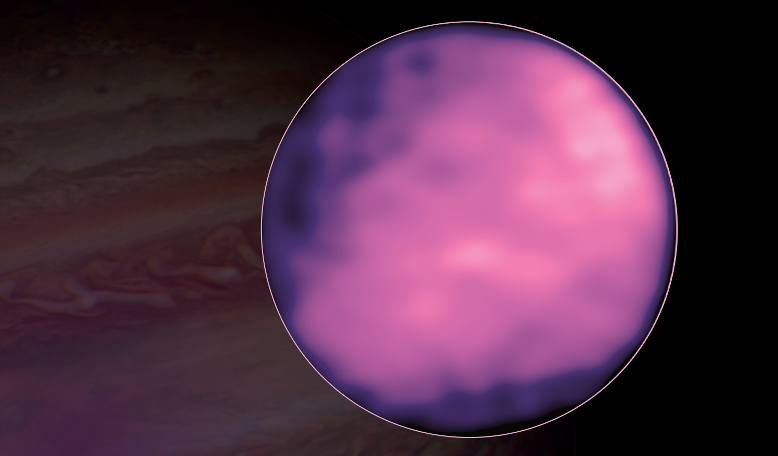Scientists using the Atacama Large Millimeter/submillimeter Array (ALMA) have created the first global thermal map of Europa which has revealed an enigmatic cold spot on the moon’s northern hemisphere.
The sixth largest moon in the Solar System, Europa, holds a special interest for planetary scientists as mounting evidence by a succession of space probe flybys, strongly suggests that beneath its icy crust an ocean of briny water is sloshing about, swirling around material that when paired with some heat, could be the right environment for life to flourish.
At its warmest, Europa’s surface temperature never rises above minus 160 degrees Celsius (minus 260 degrees Fahrenheit) and being so outwardly cold, you might think that heat is completely lacking within this ice-moon. However Europa’s surface is not only young – around 20 to 180 million years old – but it is also crisscrossed with dark streaks, called lineae, which indicate that some as-yet-unidentified thermal or geologic processes are going on under its icy shell.
So, as an ocean world with potential geologic activity, Europa’s surface temperatures are of great interest because they may help pinpoint the locations and extents of any such activity and give future interplanetary missions a heads-up as to where to start looking for signs of life.
“These ALMA images are really interesting because they provide the first global map of Europa’s thermal emission,” said Samantha Trumbo, a planetary scientist at the California Institute of Technology and lead author on a paper published in the Astrophysical Journal.
Although most of the global temperatures were inline with what was expected from this ice world, an anomaly that appeared twice in two different images and at two different times of day has highlighted a region that is truly distinct from its surroundings.
This region, say the team in their research paper, coincides with a location that has previously been reported as having the highest water ice abundance, but, adds the team, “it does not correspond to any particular geologic unit or any unusual visible morphological or albedo features.”
Due to its location, the anomaly was not picked up by the Galileo spacecraft which provided the bulk of current data on Europa, therefore a further analysis of this region may have to wait until either NASA’s Clipper or ESA’s and NASA’s joint JUICE mission reaches this frigid but curious moon.
For the time-being though, this surface oddity remains something of a mystery.











